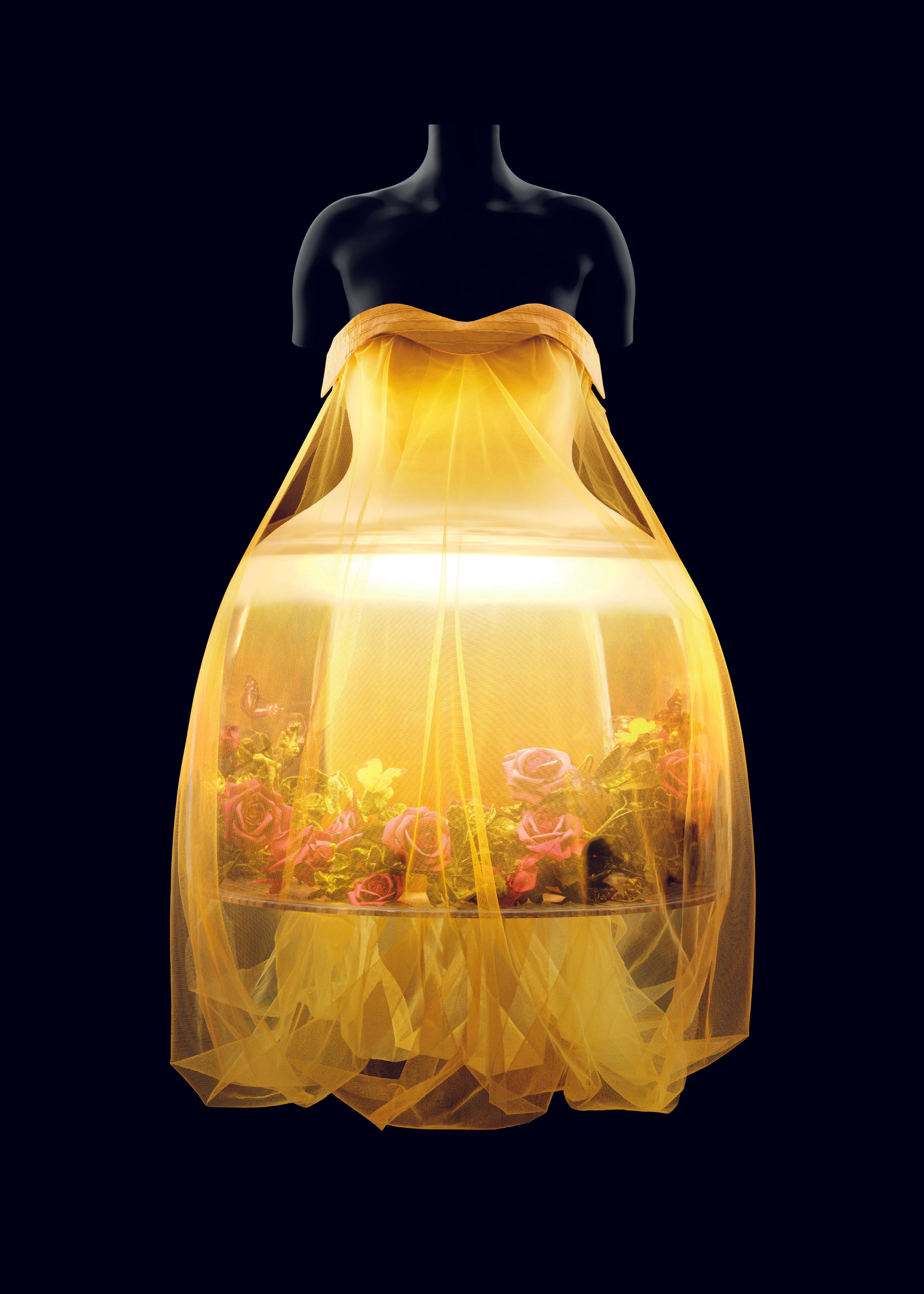"Junon"
By 1949, Christian Dior's instinct for calibrated innovations of the body's "line" had established him as fashion's preeminent arbiter. That year, dresses called "Venus" and "Junon," or Hera to the Greeks, were among the most coveted of his designs. Dior's Venus was realized in the delicate eighteenth-century gray that was his signature, frosted with iridescent beading and embroidery. But his Junon is more vividly conceived. The magnificent skirt of ombréed petals, like abstractions of peacock feathers without their "eyes," obliquely references the bird associated with the Queen of the Olympians. Emanuel Ungaro's classical gown (1993.345.15a-c), like the magnificent peplos and capacious himation befitting the noblest Olympian goddess, is discrete in its coverage.
Current notions of classical dress are surprising in the breadth of their parameters. They are based in part on the original variations and manipulations of the antique models, the attributes accrued to it over time by artistic convention, and the twentieth-century adaptation of ancient methods to modern forms. That the dress of people two-and-a-half millennia in the past can imbue a design of today with the aura of myth and timeless beauty suggests that the classical mode, like Penelope's weaving, is continuous and without end.
Artwork Details
- Title:"Junon"
- Couture Line:House of Dior (French, founded 1946)
- Designer:Christian Dior (French, Granville 1905–1957 Montecatini)
- Date:fall/winter 1949–50 haute couture
- Culture:French
- Medium:silk, plastic
- Credit Line:Gift of Mrs. Byron C. Foy, 1953
- Object Number:C.I.53.40.5a–e
- Curatorial Department: The Costume Institute
More Artwork
Research Resources
The Met provides unparalleled resources for research and welcomes an international community of students and scholars. The Met's Open Access API is where creators and researchers can connect to the The Met collection. Open Access data and public domain images are available for unrestricted commercial and noncommercial use without permission or fee.
To request images under copyright and other restrictions, please use this Image Request form.
Feedback
We continue to research and examine historical and cultural context for objects in The Met collection. If you have comments or questions about this object record, please contact us using the form below. The Museum looks forward to receiving your comments.
